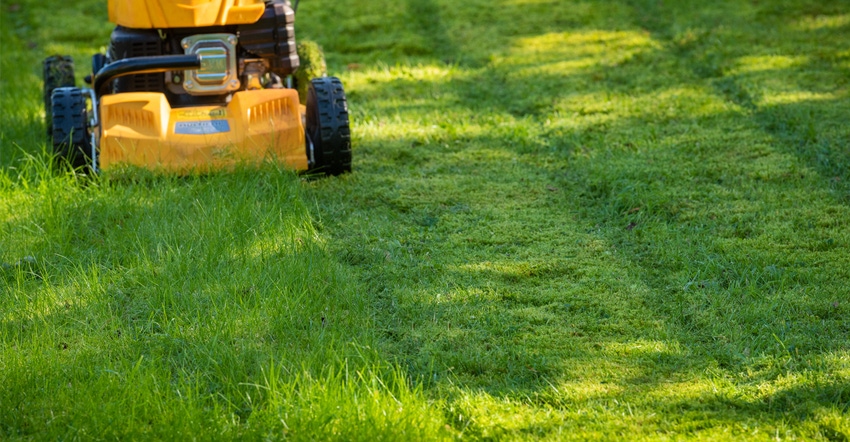
Gardening and lawn care in times of drought might need to change to ensure flower and vegetable beds flourish all season long. Horticulturalist Esther McGinnis with North Dakota State University Extension shares ways to get your gardens and lawn off to a strong start this spring.
Mowing high is one of the best things that can help your lawn during a drought year. “Set the mower deck at 3 inches,” McGinnis says, adding that letting the turf blade grow taller will help the root system grow.
For people looking to seed their lawns, tall fescue works well in the Dakotas, especially due to its drought tolerance. Another change to give lawns their best chance this year is to skip or delay the mid-July fertilizer application. “Unless you’re irrigating an inch or more a week, don’t fertilize your lawn in midsummer,” she says.
McGinnis cautions against working on lawns too early in the spring, as wet soil conditions can cause soil compaction. But with wet soils not a problem for most lawns this spring, she’s answering more questions on crabgrass prevention.
“Crabgrass is a warm-season annual weed, and it starts to germinate at 55 degrees [F]. We advise to start putting a preemergent herbicide down when the average soil temperature is around 50 degrees.” McGinnis says. “If you can find a crab grass preventer without that fertilizer that is really going to help this year. We don’t want to fertilize the lawns too early as that can impact the root system.”
She says that especially in a drought year, lawns will need to have a lengthy root system, which early fertilizer application can impede. This early application causes the grass blade to grow at the expense of the roots. Wait until mid- to late-May to fertilize the lawn.
Garden care
Fall blooming perennials are best divided in the spring. “Spring division is good, and we also divide our ornamental grasses right now,” McGinnis explains. “For vegetable gardens, we can start preparations, and it’s also a great time to do a soil test.”
Soil testing for gardens can find nutrient gaps in the soil. Testing can be done at NDSU’s soil testing lab. “It’s a good idea to test soil every three to four years. We’re discovering that more and more individuals are overapplying phosphorus and potassium, which can have detrimental effects,” she says. Soil sampling in gardens should consists of six to eight samples from different areas in the garden, which when mixed together should equal around a pint of soil.
“Cool-season crops can also be seeded before, most and spinach is an amazing option to start with. Hedge your bets, we don’t know what is coming still, and you could be risking your plants to potential damage,” McGinnis says about planting this early in the spring.
Succession planting is an easy way to mitigate those risks, by planting one row of each crop at a time. “If that first planting is damaged by frost, we can still have that backup crop,” McGinnis says. Warm-season crops such as tomatoes can also be started indoors, to be transplanted out in the garden late May.
Common questions
“We see a lot of demand for pollinator information,” McGinnis says. NDSU Extension and its agents share presentations and educational programming at numerous garden forums and events in the spring. “People are looking for what type of plant can be used in the garden to attract pollinators. Asters and sedums are good options that attract wild bees,” she says.
NDSU Extension has developed publications that can help gardeners select plants to attract pollinators in their areas. “It’s great to have more pollinator plants out on the farms. We don’t have many flowering plants anymore out in those areas. So if you can plant a pollinator garden, you can be an oasis for the bees,” McGinnis says.
NDSU Extension promotes pollinator gardens with lawn and garden owners, and will even send official signage for those that meet the qualifications as a certified pollinator garden.
About the Author(s)
You May Also Like






